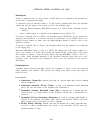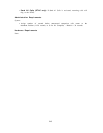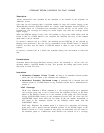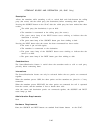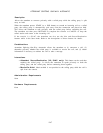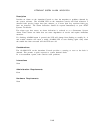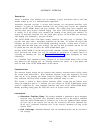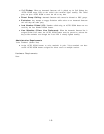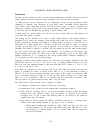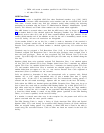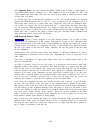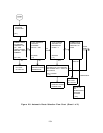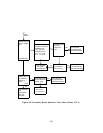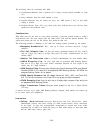AUTOMATIC INTERCOM
Description
Allows a multiline voice terminal user (or attendant) to place and answer calls to and from
another station by use of a dedicated button appearance.
Automatic Intercom provides a private path between
two designated multiline voice
terminals. To place an Automatic Intercom call, the calling party presses the Automatic
Intercom (AUTO ICOM) button and goes off-hook.
The calling party hears ringback tone
and the called party receives standard ringing.
The status LED associated with the button
is steadily lit at the calling voice terminal and flashing at the called voice terminal. To
answer an Automatic Intercom call, the called party presses AUTO ICOM (not necessary
with Ringing Line Preference ) and goes off-hook.
The AUTO ICOM status LED lights steadily whenever the other party is off-hook. This
provides each party with a station-busy indication for the other.
To activate the busy-to-idle
reminder, the user can press AUTO ICOM (remaining on-hook). A short burst of tone is
provided when the other party goes on-hook.
The user can then go off-hook, and the call will
be placed; the user does not press the AUTO ICOM button again.
Pressing AUTO ICOM to invoke the busy-to-idle reminder overrides Prime Line Preference.
Once activated, the feature can only be canceled by preelection of another button or
answering an incoming call.
See the “Busy-to-Idle Reminder” feature description for more
information.
At a Switched Loop Attendant Console, operation of an AUTO ICOM button seizes an idle
loop button for the outgoing call. An incoming intercom call arrives on a loop button and
does not flash at the AUTO ICOM button of the console.
Considerations
The intercom feature should not be confused with ordinary station-to-station calling inside
the system using dialed PDCs.
With Automatic Intercom, users who frequently call each
other can do so by pressing one button instead of dialing a PDC. In addition, the station-
busy indication and busy-to-idle reminder provide additional utility to users.
This feature is similar to Direct Station Selection (DSS), except that the buttons must
always be assigned in pairs (i. e.,
between two sets.) Hence, an AUTO ICOM button cannot
point to a single-line set.
Also, Automatic Intercom calls arrive at the AUTO ICOM button,
thereby providing calling party ID; DSS calls arrive on System Access buttons.
Interactions
● Attendant Position Busy: The inactive attendant is permitted to place Automatic
Intercom calls. For DTAC only: Automatic Intercom calls to the inactive attendant
where the AUTO ICOM button is located in one of the two rightmost button columns
will not ring at the console, nor can they be covered by the active attendant. For
SLAC only: Automatic Intercom calls to the inactive attendant will ring at the
inactive SLAC.
● Call Coverage: Automatic Intercom calls are considered private and do not receive
call coverage.
2-49




